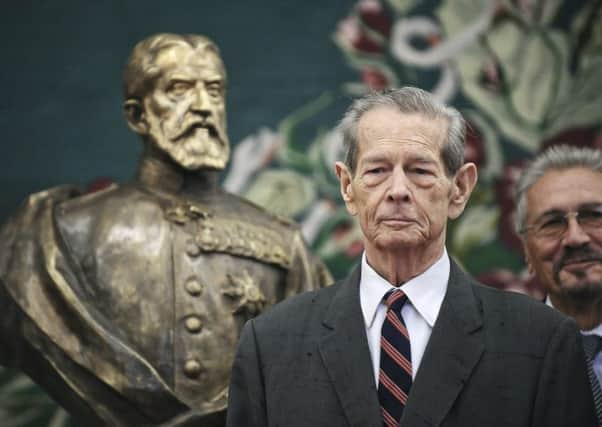King Michael I of Romania


Having played a pivotal role in Romania’s switch to the Allied cause following a coup in 1944, he spent decades in exile working as a farmer and aircraft pilot.
He would not get his citizenship back until 1997, eight years after the collapse of Communism.
Advertisement
Hide AdAdvertisement
Hide AdHis death leaves alive only two people who headed their nations during the war – former King Simeon II of Bulgaria, and the Dalai Lama of Tibet, both of whom were children at the time.
Michael, a great-great-grandson to Queen Victoria, acceded to the throne in 1927 at age six, after his father, Carol II, eloped with his mistress and abdicated.
After three years Carol returned to the throne and remained there until abdicating again in 1940, at which point Michael became king for a second time. He reigned for seven years until he was forced to abdicate.
His reign is best-remembered for his coup on August 23 1944, against the pro-Nazi leader Marshal Ion Antonescu, which took Romania into the war on the side of the Allies.
Advertisement
Hide AdAdvertisement
Hide AdFor this, he was awarded Chief Commander of the Legion of Merit by US President Harry Truman and was decorated with the Soviet Order of Victory by Joseph Stalin.
Romania’s switch gave the Soviets the opportunity to advance into the country. Michael became little more than a figurehead as the Soviets installed a Communist-led government and Romania became part of the Warsaw Pact.
Many thought that he would remain in exile in London after his arrival for the wedding of Princess Elizabeth to his cousin, Prince Philip of Greece, in November 1947. But he was summoned to the Elisabeth Palace in Bucharest and told to sign a pre-typed abdication. If he refused, he was told, 1,000 soldiers would be executed.
The Communist government abolished the monarchy on the day of his abdication. It was the last among the Warsaw Pact countries to fall.
Advertisement
Hide AdAdvertisement
Hide AdStripped of his citizenship, Michael settled with his wife and five daughters in Switzerland and later Britain, where he worked as a test pilot and chicken farmer.
On December 25 1990, a year after the revolution that overthrew the Communist dictatorship of Nicolae Ceausescu, he and several other members of the royal family entered Romania for the first time in 43 years. He and his companions were stopped by tanks, taken to the airport and told to leave.
In 1992, however, the government allowed Michael to return to Romania for Easter, and more than a million people turned out to see him. His popularity alarmed President Ion Iliescu, and Michael was forbidden to visit Romania again for five years.
A year after Iliescu’s defeat to President Emil Constantinescu in 1996, the Romanian government restored Michael’s citizenship. Savarsin Castle in western Romania was returned to him, while the Elisabeth Palace in Bucharest was made his residence.
Advertisement
Hide AdAdvertisement
Hide AdOn his 90th birthday in 2011, he addressed parliament for the first time in 65 years and attacked the country’s post-Communist leaders.
Born on October 25 1921, Michael married Anne of Bourbon-Parme in 1948. She died in August 2016.
They are survived by five daughters, the eldest of whom, Princess Margareta, will succeed him as head of the royal family.
As great-great-grandson of Queen Victoria, Michael was also related to the Danish, Spanish, Norwegian and Swedish royal families.